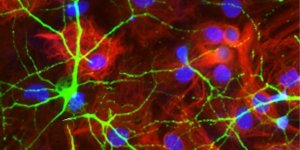| News / Science News |
Roundworms have the Right Stuff
NASA | MAY 27, 2015
Roundworms—or Caenorhabditis elegans—share a considerable amount of genetic material with humans. Enough to make them the good candidates for a new study designed to determine how low-gravity environments affect astronauts.
When gravity is greatly reduced—as in spaceflight—we no longer use our muscles to resist the usual pull of a planetary mass, and, without additional exercise astronauts lose both bone and muscle. Additionally, studies have shown that other parts of the body change in space like the bend of the spine, the amount of blood in the body and eyesight.
Roundworms, like fruit flies, are often used as models for larger organisms. This is because their short lifespans allow for scientists to observe several generations of worms within a short period of time, yielding quicker results for studies.
In a new investigation, crew members of the International Space Station will grow two batches of worms: one in microgravity and one in a centrifuge, allowing the worms to experience simulated gravity.
The results from the experiment could impact more people than just future astronauts. Understanding the molecular changes that potentially take place in microgravity could help researchers to develop treatments and therapies to counteract physical changes associated with aging and extended bed rest.
YOU MAY ALSO LIKE




